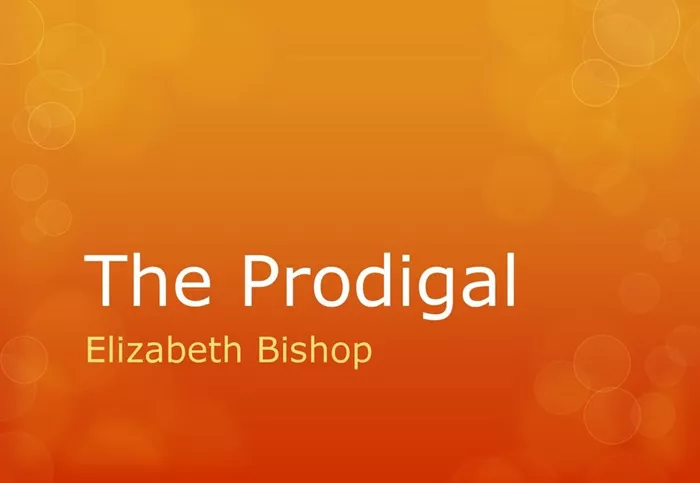Welcome to Poem of the Day – A Prodigal by Elizabeth Bishop
Elizabeth Bishop, one of the most celebrated American poets of the 20th century, is known for her precise and vivid descriptions, as well as her ability to capture emotional depth with clarity and grace. In her poem “A Prodigal”, Bishop explores themes of alienation, loss, and the difficult process of returning to a familiar place after a period of absence. This poem, written in 1956, reflects Bishop’s characteristic ability to merge personal experiences with universal themes, creating a poem that speaks to the complexities of both human relationships and the self. In this article, we will examine the poem’s structure, imagery, themes, and its broader meaning.
A Prodigal Explanation
The Prodigal’s Journey
At the heart of “A Prodigal”, Bishop introduces the persona of the prodigal—a figure who has gone astray and is now returning. The term “prodigal” refers to someone who leaves their home or responsibilities, often returning after a long absence. The poem can be read as a reflection of the Biblical parable of the Prodigal Son, a tale about repentance, forgiveness, and redemption. However, Bishop’s interpretation is more subtle, focusing less on spiritual redemption and more on the emotional and physical challenges of returning home after time away.
The poem opens with an image of the prodigal “half-grown,” a sense of youthful uncertainty and tension in the air. This image sets the stage for a journey not just of return, but of a return that is incomplete, uncertain, and even painful. There is no grand homecoming, but rather a series of small, vivid details that depict the difficulty of reintegration into a once-familiar space.
Symbolism and Imagery
Bishop’s use of imagery in “A Prodigal” is rich and evocative. The poem opens with the vivid, sensory details of the prodigal’s return. The “loose, red apples” and the “blackened leaves” on the ground evoke a sense of neglect and decay. These images suggest a home that is no longer as it was, and perhaps even the prodigal’s own sense of fragmentation or disintegration after time spent away.
Bishop often utilizes natural imagery to reflect emotional states, and in this poem, the prodigal’s return is marked by a recognition of the passage of time. The once-nurturing environment has been ravaged, and both the setting and the person returning seem to be in a state of deterioration. The “golden apples” symbolize the past, perhaps the prodigal’s previous innocence, and the “blackened leaves” suggest loss, perhaps the failure to fulfill promises or meet expectations.
The Prodigal’s Emotional Struggle
The prodigal’s internal struggle is apparent in several places throughout the poem. The poem’s tone is one of disillusionment and conflict. The prodigal “will not return to his place,” even though the physical space of the home is still there. The conflict between the urge to return and the reluctance to do so highlights Bishop’s exploration of the alienation that can occur in the process of returning. The prodigal seems to be trapped between wanting to return to the warmth of the past and an inability to reclaim what has been lost in time.
Bishop captures the alienation of the prodigal by presenting him as a figure who is caught in a paradox. He is physically present in the space, but emotionally he remains apart. There is no reconciliation here; instead, there is a longing for something unattainable, a past that cannot be recaptured.
The Broader Meaning
On a broader level, “A Prodigal” can be read as a meditation on the themes of isolation, change, and the passage of time. The prodigal’s homecoming is not a triumphant return, but a painful, tentative reentry into a space that no longer holds the same meaning. This reflects the universal experience of returning to a familiar place only to find it altered, much like the prodigal’s own personal transformation.
Bishop also touches on the idea that redemption—whether spiritual, emotional, or physical—is not always simple or immediate. The prodigal’s return is not an easy one; it is fraught with tension and discomfort. This suggests that personal growth and reconciliation require time and effort, and may never be fully achieved.
Conclusion
In “A Prodigal”, Elizabeth Bishop offers a poignant exploration of the complexities of return, memory, and alienation. Through vivid imagery, careful attention to detail, and an emotionally charged atmosphere, Bishop invites readers to reflect on their own experiences of loss and reconciliation. The poem, with its understated yet powerful language, reveals that the journey of returning home is not always one of joy, but often one of internal conflict and painful recognition.

